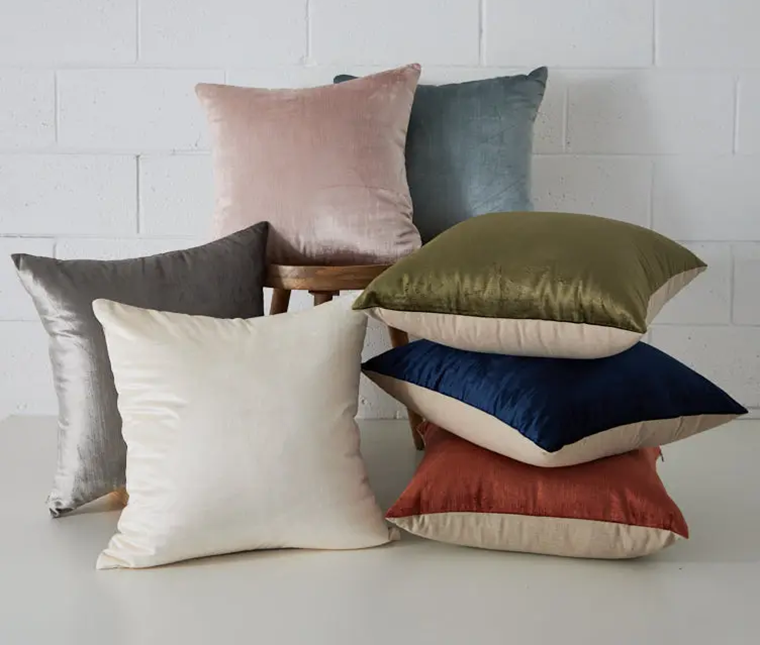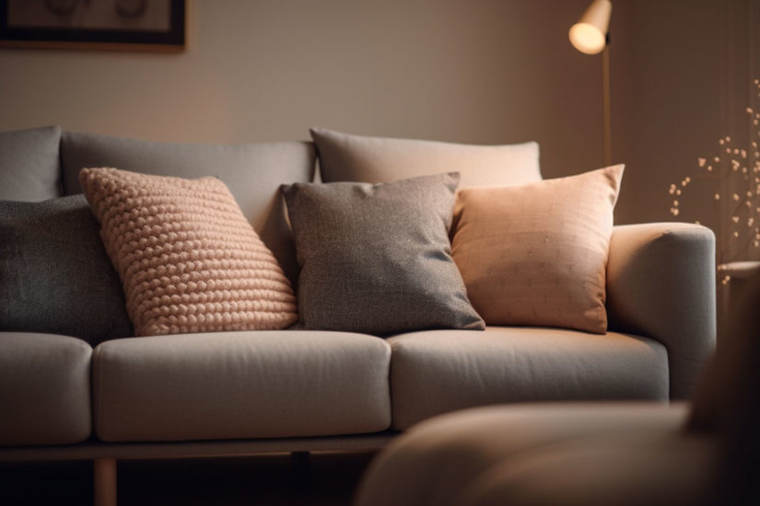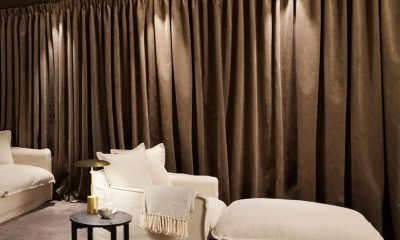Home Decor
Living Room Cushions: Benefits and Styling Tips
If you’re standing in the middle of your living room, wondering, besides the tremendous effort you put in, why you can’t make it look like the latest post of your favourite Instagram lifestyle influencer, let me break it to you: the tiniest details are what makes a house a home. Think of it this way – what’s something all cosy-looking living spaces have in common? Look closer, and you’ll see – there are decorative cushions on the sofa, a throw on the chair and a rug beneath the coffee table or next to the couch.
Designers and stylists know that textiles are the ideal way to add cosiness and texture to an interior. That’s why they use them anytime they want to make a space look warm and inviting. Cushions are one of the simplest and safest methods of using textiles to add flair to your living room. Let’s see why and how!
Why Are Cushions Important?
A cushion is a versatile accessory that enhances a space’s visual appeal while adding functionality and comfort.
For example, you can use decorative pillows in bold and bright hues to add a pop of colour to a room or different patterns and textures to provide visual interest and depth. You can achieve a cohesive look that combines everything by styling or matching cushions with other textile elements, such as rugs and curtains. That way, you can add personality to a space with a neutral or monochromatic scheme that looks dull and monotonous otherwise.
Conversely, throw pillows can make sitting or lying on your couch much more comfortable by providing support. Additionally, decorative pillows are relatively inexpensive, unlike furniture or wall colour, making them an affordable accessory to use anytime you want a change in decor. You can effortlessly change or update them, experimenting with different colours, patterns and textures whenever your taste or the season changes.
How to Choose and Style Living Room Cushions?

With the massive range of living room cushions available, it can be challenging to pick the right pieces for your space and then style them together to match your home’s current aesthetic or create a look you’ve had on your mind lately. Finding your aesthetic and colours and understanding the general cushion styling guidelines can help you make the living room from your dreams and make your Pinterest mood board jealous.
Find Your Aesthetic
Before you start the cushion-picking and styling process, you must clearly understand your space and its aesthetic. Bright and bold colours work well in maximalist interiors with lots of decor and art without making them look unbalanced. On the other hand, gentle colours and a more low-key throw pillow setup look best in soft, neutral spaces.
Determine How Many Cushions You Need

Let the room’s style tell you how many cushions you need. Do you aim for a more traditional or a more modern look? That’s essential because even numbers fit better in conventional settings. For example, the couch typically has two living room cushions on either end in a classic lounge room.
However, since the eye likes odd numbers, décor items are typically arranged in groups of three. For a more contemporary look, you might arrange your bed with three pillows in a row and a large, rectangular cushion in the front. In this case, your furnishings will also be crucial. An oversized four-seater couch will still seem balanced with six or seven cushions, while two-seater couches and single beds look better with fewer cushions.
Pick Your Colours
Look at your room, walk around, and observe the different colours and furniture timbers. If there are a few colours or colour combinations in the room, try including them in the cushions to create a cohesive look. If you have furniture made from dark woods, such as walnut, choose cushions in colours with cool tones, as they look best with those timbers’ cool undertones. Oak and other light woods are best to pair with warm tones.
If your area is minimalistic or has a Scandinavian feel, pick a colour and use various of it to create patterns. For example, if your living room is pink, you may go with blush, terracotta, and white pillows that are striped and basic.
If your space is more maximalist or mid-century inspired, create a colour scheme that incorporates two of the room’s tones along with a pop of a rich accent colour. For instance, a few jewel-coloured cushions would look fantastic in a room with dark wood and rich green accents.
If you’re completely clueless and faced with a blank canvas, a combination of tan, grey, white, black, and pillows latte will always look stylish.
Contrasting Textures Can Work a Magic
Layer on the textures to quickly add visual appeal and maintain an on-trend style. Try combining tufted patterns, boucle, faux fur, embroidery, and other embellishments with simple, smooth textiles. If you’re sticking to a rigid colour palette, it’s essential to experiment with textures to break up the monotony. By selecting cushions with tassels, you may give even the simplest cushions some substance.
Remember that different textures complement various aesthetics. Choose materials that complement your desired look and way of life. For example, velvet is traditionally snug and warm, while linen is breezy, light, and summery. Try one pillow covered in silk, velvet, or metallic thread for a subtle sheen that grabs attention.
Writing for the blog since 2012, Chris simply loves the idea of providing people with useful info on business, technology, vehicles, industry, sports and travel – all subjects of his interest. Even though he sounds like quite the butch, he’d watch a chick flick occasionally if it makes the wife happy, and he’s a fan of skincare routines though you’d never have him admit that unless you compliment his impeccable skin complexion.

























